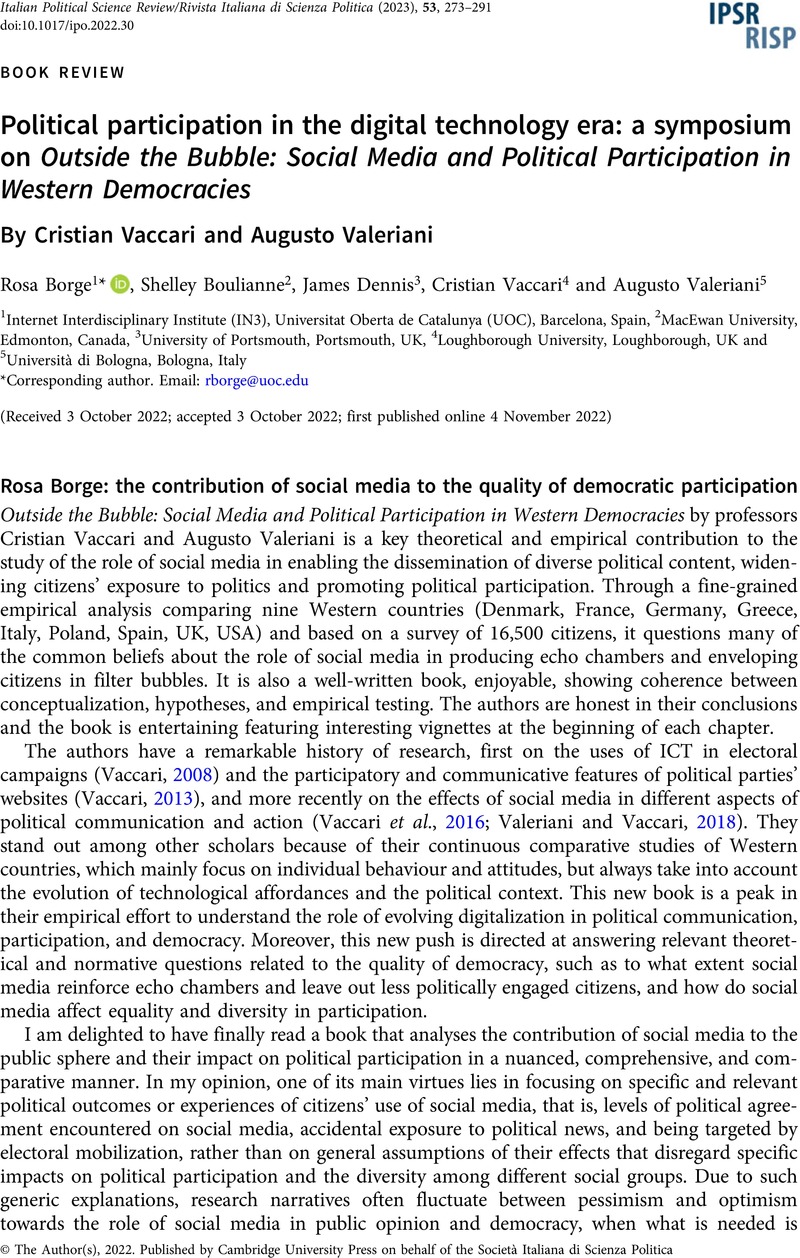No CrossRef data available.
Article contents
Political participation in the digital technology era: a symposium on Outside the Bubble: Social Media and Political Participation in Western Democracies By Cristian Vaccari and Augusto Valeriani
Review products
Published online by Cambridge University Press: 04 November 2022
Abstract

- Type
- Book Review
- Information
-
Italian Political Science Review / Rivista Italiana di Scienza Politica , Volume 53 , Issue 2 , July 2023 , pp. 273 - 291
- Copyright
-
Copyright © The Author(s), 2022. Published by Cambridge University Press on behalf of the Società Italiana di Scienza Politica




